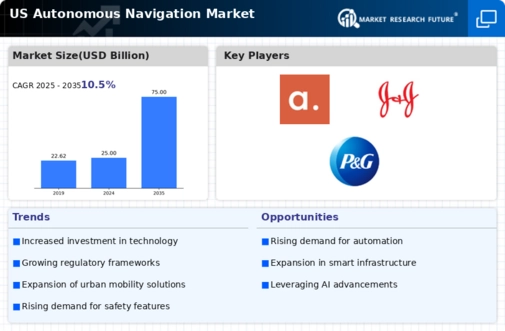US Autonomous Navigation Market Summary
The US Autonomous Navigation market is projected to grow from 25 USD Billion in 2024 to 75 USD Billion by 2035, reflecting a robust growth trajectory.
Key Market Trends & Highlights
US Autonomous Navigation Key Trends and Highlights
- The market is expected to expand at a compound annual growth rate of 10.5 percent from 2025 to 2035.
- By 2035, the market valuation is anticipated to reach 75 USD Billion, indicating substantial investment and innovation in autonomous technologies.
- In 2024, the market is valued at 25 USD Billion, highlighting the current momentum in the sector.
- Growing adoption of autonomous navigation technologies due to increasing demand for safety and efficiency is a major market driver.
Market Size & Forecast
| 2024 Market Size | 25 (USD Billion) |
| 2035 Market Size | 75 (USD Billion) |
| CAGR (2025 - 2035) | 10.5% |
Major Players
Apple Inc (US), Microsoft Corp (US), Amazon.com Inc (US), Alphabet Inc (US), Berkshire Hathaway Inc (US), Meta Platforms Inc (US), Tesla Inc (US), Johnson & Johnson (US), Visa Inc (US), Procter & Gamble Co (US)













